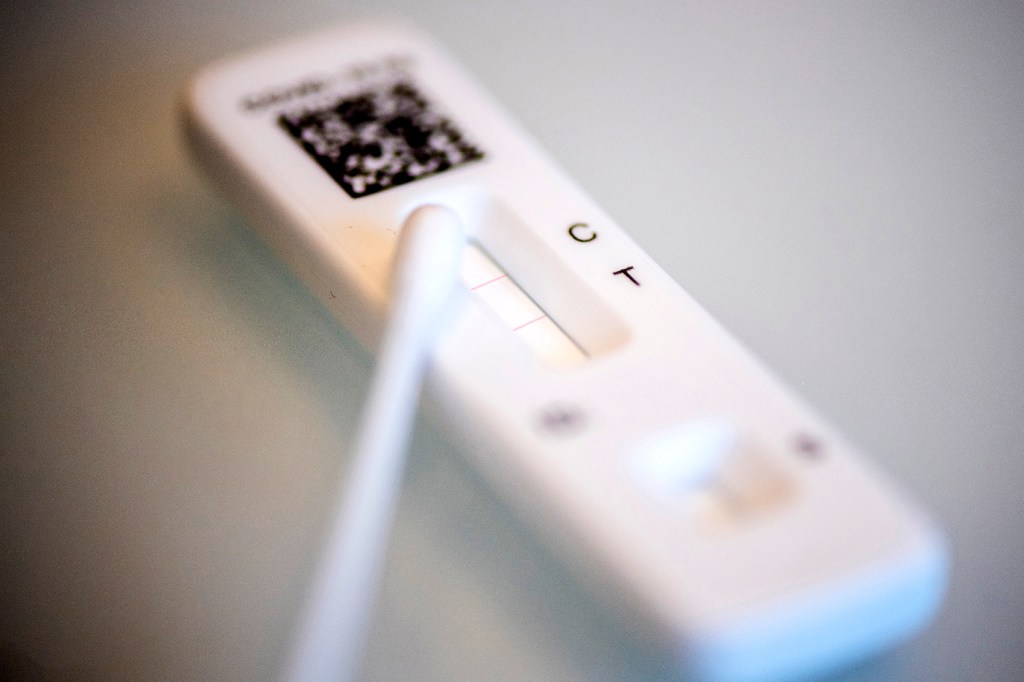COVID-19 guidelines may be relaxed by CDC. Why this indicates a shift to a new ‘phase of post-pandemic world,’ expert says
The CDC is expected to end the five-day isolation minimum for people with COVID-19, something one Northeastern said is a ‘good sign’ of how we’ve learned to manage infection.

The Centers for Disease Control and Prevention may be loosening COVID-19 isolation guidelines for the first time since 2021, recommending that people leave isolation once their symptoms subside, regardless of how many days it’s been since they tested positive.
The new guidelines will state that people can leave isolation as soon as their symptoms improve and they’re fever-free for 24 hours without medication, according to CDC officials who spoke to The Washington Post on the condition of anonymity. People without symptoms don’t have to isolate at all.
The new guidelines are expected to be officially released in April.

It’s a sign the United States is shifting in its approach to COVID to one more similar to the flu, said Neil Maniar, director of the master of public health in urban health program and professor of the practice at Northeastern University.
“It’s not surprising,” Maniar said. “It’s just another indication that we are moving to a very different phase of our post-pandemic world. COVID is something that is now just part of our lives as a part of the background. We have a number of tools to both protect ourselves from COVID and to limit as much as possible the severity of illness. I would see it as a good sign that we are much better at managing COVID.”
Featured Posts
Under the current guidelines, which were set in December 2021, people who test positive for COVID-19 should stay home for at least five days, even if they’re asymptomatic. The CDC says people who have no symptoms can leave isolation after five days while those who were symptomatic should continue to isolate until they’re fever-free for 24 hours without the aid of medication or until their symptoms improve. This is similar to the guidance issued for the flu.
California and Oregon already shifted their state guidelines so people do not have to isolate for a set number of days.
Maniar said the current guidelines reflect how vaccines, community immunity, and new treatment options have reduced the risk of severe illness for many. But he added that this does not mean people should not take any precautions, especially if they’re around high-risk individuals.
“I think we still need to exercise many of the same precautions that we were … during the pandemic,” he said. “If you’re going to be around someone who’s high-risk and you have asymptomatic infection, it’s important to wear a mask so that you’re protecting those around you, especially someone who is at risk of illness even from a mild (case). … It’s important to exercise common sense and be thoughtful of those around you.”
Maniar said those with symptomatic COVID should continue to isolate and adhere to the current guidelines and those with asymptomatic cases should still notify people they might’ve exposed in case someone is high-risk. People should also continue to test when they’re sick and stay home if they have symptoms, regardless of whether they have COVID, so that way they know what treatments they might need and can prevent spreading any illness.
“I think we should continue to exercise some safety measures even once the new guidelines are released,” Maniar added. “It’s OK to wear a mask if you have an asymptomatic COVID infection if you’re worried about getting others around you sick. … This (new policy) also acknowledges that we’re moving on from the pandemic. It’s part of our day-to-day lives now.”











